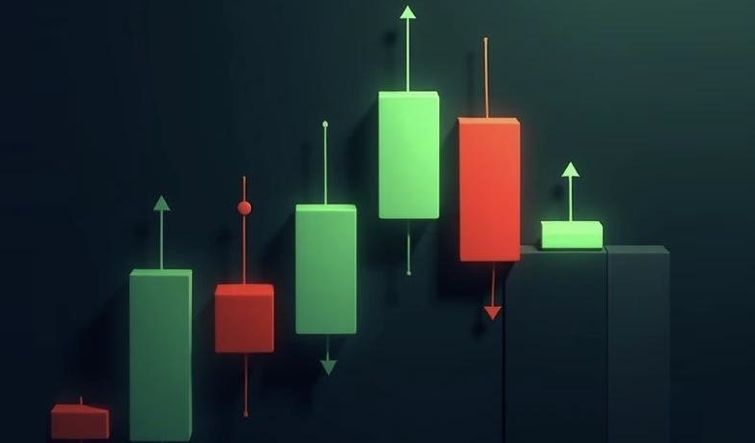Most people stare at a stock chart the same way they’d look at a foreign menu in a country they’ve never been to, lost, guessing, and hoping they don’t pick the worst thing on the list.
But for traders? A chart is a language. It speaks in trends, signals, reversals, and momentum shifts. If you know how to read it, it doesn’t just tell you what’s happening. It whispers what might happen next.
The good news? You don’t need to be a financial wizard to learn the language. You just need a clear approach, the right mindset, and a platform that doesn’t get in your way. That’s where Quotex comes in, offering simple, customizable, real-time charting for traders who want clarity over clutter.
Here’s how to stop guessing and start reading stock charts like a real trader
First, Choose Your Weapon: Line, Bar, or Candlestick?
Stock charts come in a few flavors. Each tells the same story but in a slightly different accent.
Line charts are the simplest, just a clean line tracking price over time. Good for quick glances, bad for serious analysis.
Bar charts show high, low, open, and close (HLOC) for each time period. More detail, more signal.
Candlestick charts? These are the crowd favorite. Each “candle” tells you where the price opened, how high it went, how low it dropped, and where it closed.
If you’re serious about trading, start with candlesticks. They pack the most information into a single glance. And they’re beautifully visual, easy to spot patterns once you know what to look for.
On Quotex, switching between chart types takes seconds. No hunting. No clunky menus. Just click, pick, and read.
Timeframes: Your Viewpoint Changes the Story
Think of chart timeframes like zooming in and out on a photo.
A 1-minute chart shows every minor tick. A 1-day chart filters out noise and shows the bigger picture. Neither is “right” or “wrong”, they just serve different purposes.
Short-term traders might use 1-minute or 5-minute charts to catch quick moves. Swing traders lean on 1-hour or daily charts to spot larger trends. Long-term investors? Weekly or monthly charts.
Rule of thumb? Match your strategy to your timeframe. Don’t use a 15-second chart to make a month-long decision.
Quotex gives you flexibility here. You control the tempo. Fast, slow, or somewhere in between.
Learn to Spot the Trend, Before You Trade Against It
The oldest rule in trading: don’t fight the trend.
Uptrend? Higher highs, higher lows. Downtrend? Lower highs, lower lows. Sideways? Welcome to the land of indecision.
One of the simplest ways to identify a trend is using moving averages, lines that smooth out price over time. If a short-term moving average (like a 9-day) is above a longer one (say, 21-day), you’re in an uptrend.
But moving averages don’t predict. They confirm. Don’t use them as a magic wand. Use them as context.
On Quotex, you can add moving averages, Bollinger Bands, RSI, MACD, and more with one click, so your chart works for you, not the other way around.
Patterns That Actually Mean Something
Forget memorizing 50+ chart patterns. Start with three:
1. Support and resistance – Levels where price tends to bounce or stall. These are psychological zones. Traders watch them. So should you.
2. Double tops/bottoms – Reversals that look like “M”s and “W”s. When confirmed, they often lead to sharp moves.
3. Breakouts – When price smashes through support/resistance after consolidation. Watch volume here. Breakouts without fuel often fizzle.
Patterns work because traders believe in them. It’s herd behavior, part fear, part greed, part habit.
Price Action Is King. Indicators Are Advisors.
Indicators are helpful. But they don’t lead, they lag.
Price action, what price is doing right now, is your main source of truth. Candlestick formations like dojis, engulfing patterns, and pin bars offer clues about upcoming shifts.
Indicators like RSI (Relative Strength Index) or MACD (Moving Average Convergence Divergence) are great for spotting overbought or oversold conditions. But they’re tools, not prophecies.
Don’t get analysis paralysis. Simplicity scales. And Quotex keeps your interface distraction-free so you can focus on price first, tools second.
Final Word: Charts Don’t Lie, But Traders Do
The chart shows what is. You decide what it means. That’s where the power, and the danger, comes in.
Reading charts is about recognizing probabilities, not certainties. There’s no perfect setup. But there are better decisions. Smarter entries. Cleaner exits. And the more time you spend reading the market’s language, the more fluent you become.
Quotex gives you the binary trading platform to read, react, and refine, all in real time, with the flexibility to trade your way.
Ready to level up your chart reading game? Open a demo on Quotex today and start practicing with live data, without risking a cent. Your edge starts here.

